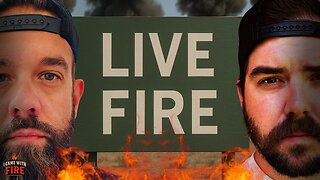Premium Only Content

Kim Snyder researching the history of Myalgic Encephalomyelitis (Epidemic Neuromyasthenia) | "You have to go to the early outbreaks & not 6 months after the case" - Alexis Shelokov & Don Henderson | Meeting Punta Gorda Outbreak Survivors
1956 Punta Gorda, Florida Outbreak
https://me-pedia.org/wiki/1956_Punta_Gorda_outbreak
In the spring of 1956, at least 150 cases of an illness diagnosed as Epidemic Neuromyasthenia occurred in Punta Gorda, Florida, a small community of approximately 3000 residents on Charlotte Harbor Bay on the state's southwest coast. The pattern of spread was consistent with a person-to-person transmission of an infectious agent.
Two approaches were applied to determine the nature and incidence of the illness. One consisted of a detailed examination, history and laboratory results of twenty one of the cases reported to physicians. The second approach consisted of a house-to-house survey to identify cases not reported because of a more mild illness presentation.
Symptoms differed slightly from patient-to-patient. They included but were not limited to: fatigue, headache, nuchal (nape or back of the neck) pain, muscle aches and pain, paresthesia, paresis, fever, nausea and vomiting, diarrhea, loss of appetite, difficulty in swallowing, cognitive and emotional changes, such as confusion, memory impairments, especially in short term memory, difficulty with math calculations, depression, episodic crying, "tension," nightmares, hyperventilation, visual disturbances, such as blurred and /or double vision, dizziness, and unsteadiness.
The illness course was prolonged and relapsing, often requiring being bedridden, sometimes requiring hospitalization. On followup, patients often had periods of improvement with exacerbations of symptoms, often after increased physical exertion or occurring during the premenstrual period.
-
 5:15:25
5:15:25
SpartakusLIVE
7 hours agoBF6 LAUNCH DAY || WZ and BF6 followed by PUBG - The PERFECT Combo?
52.7K2 -
 1:33:59
1:33:59
Glenn Greenwald
9 hours agoQ&A with Glenn: Is the Gaza Peace Deal Real? Why was the Nobel Peace Prize Given to Venezuela's Opposition Leader? And More... | SYSTEM UPDATE #529
110K66 -
 1:24:01
1:24:01
Flyover Conservatives
1 day agoURGENT FINANCIAL UPDATE! October 14–31: The Great and Terrible Day Has Arrived - Bo Polny; 5 Mindsets You Must Master - Clay Clark | FOC Show
46.2K4 -
 4:01:36
4:01:36
VapinGamers
5 hours ago $1.07 earnedBattlefield 6 - All Protatoe and Nothing but Net - !rumbot !music
28.2K1 -
 3:23:28
3:23:28
GritsGG
5 hours agoRANK GRIND! Most Wins in WORLD! 3734+!
26K -
 4:13:49
4:13:49
I_Came_With_Fire_Podcast
14 hours agoChina Owning the Mississippi? | Letitia James Indicted, But Don't Get Excited | Insurrection Inbound
32K9 -
 6:20:54
6:20:54
Eternal_Spartan
13 hours ago🟢 Eternal Spartan Plays Battlefield 6! | USMC Vet
13.7K2 -
 LIVE
LIVE
This is the Ray Gaming
5 hours ago $0.99 earnedBattlefield 6 Launch Day Part 2 | Rumble Premium Creator
231 watching -
 58:29
58:29
NAG Podcast
7 hours agoChrissie Mayr: BOLDTALK W/Angela Belcamino
27.3K5 -
 4:25:17
4:25:17
Jokeuhl Gaming and Chat
7 hours agoMEGABONK - Why am I still playing this?
9.24K